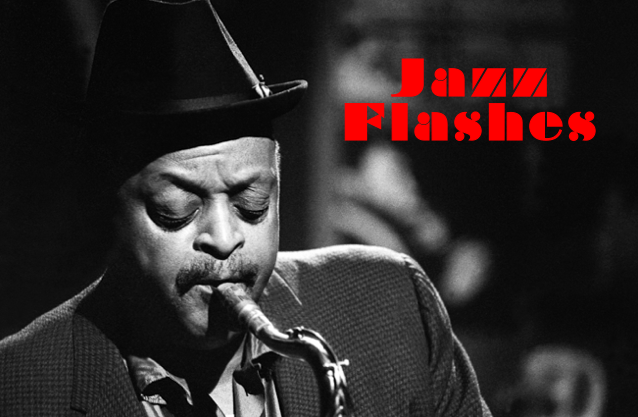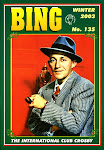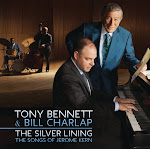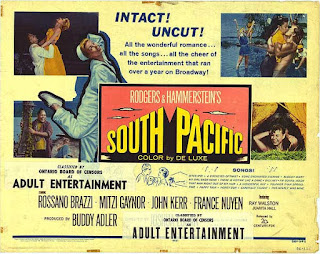 |
| Philip Furia, author of The Poets of Tin Pan Alley |
The Vintage Bandstand: And, while we are on the subject of witty, urbane lyrics, what changed during and after World War II that put an end to this heyday of urbane lyrics and ushered in the era of integrated musicals such as Oklahoma!?
Mr. Furia: I’m not a cultural historian, so let me quote Irving Berlin in the 1940s, saying “Nothing is so old as yesterday’s sophistication.” I think he meant that during the depression Americans loved to fantasize about sophisticated couples in evening clothes, drinking champagne, engaging in witty banter, and dancing on ocean liners. With the onset of World War II, Americans rallied to more homespun themes. When Richard Rodgers proposed to his longtime collaborator Lorenz Hart, that they do a musical based on a play about cowboys and ranchers in the Oklahoma Territory, Hart refused saying Broadway audiences would never be interested in such a corny subject. When Rodgers learned that Oscar Hammerstein was interested in turning the same play, Green Grow the Lilacs, into a musical, the collaboration of Rodgers & Hammerstein was born.
 |
| Richard Rodgers & Oscar Hammerstein II |
The phenomenal success of Oklahoma! on Broadway—a musical that opened not with a bevy of chorus girls but an old woman churning butter—spawned other “Americana” works—Bloomer Girl (1944) and Annie Get Your Gun (1946). While songs from these productions were tied to character and dramatic situation, the creation of “Original Cast Recordings” in boxed sets of 78rpm records made even such “integral” songs as “I Cain’t Say No” popular. In the 1950s, with the invention of LP (Long-Playing) records, such cast recordings could make a hit of so unlikely integral songs as “The Rain in Spain” from My Fair Lady (1956) or “Ya Got Trouble” from The Music Man (1957).
Another force that fostered the integrated musical was Hollywood. By the late 1940s, television had invaded the American home, and movies found it hard to lure audiences out of their living rooms. Film production was scaled back, especially in movie musicals, which were the most expensive kinds of films to mount. The few movie musicals that were made increasingly became film adaptations of Broadway musicals. Why risk an original film musical with new and untried songs when you could make a film version of a successful Broadway show with already-established hit songs. Most of these film adaptations, such as South Pacific and West Side Story, were cinematically dreadful—stiff, stagey, and frequently with dubbed singers. But the fact that audiences could see a film version of a Broadway show most could not afford to see on the stage made such movies successful. That audiences loved them attests to the power of the original stage musical that somehow survived the transfer to the screen.
TVB: I find your observation about the way that lyricists like Irving Berlin “ragged” the lyrics of some of his songs very interesting. You compare some lyrics by Berlin and Hart, for example, with the works of 1920s poets like Marianne Moore and William Carlos Williams, which show similar word-ragging techniques. In your opinion, is it possible that these poets were, in turn, influenced by the works of the popular songwriters of the day?
 |
| Dorothy Parker |
The lyricists, in turn, were much more interested in rhymed, metrical verse of poets like Ogden Nash and Dorothy Parker. Remember, that while we now think of Stevens and Williams as among the great poets of the early twentieth century, at the time they were unknown except to a small circle of readers.
TVB: And, speaking of rag, how important was the arrival of ragtime, with its rhythmic syncopation, for American mainstream music at large? I find that African American music played an important role in the development of early commercial country music, but to what extent was the work of white songwriters such as the Gershwins, Irving Berlin, Johnny Mercer, Harold Arlen, and Rodgers & Hart, to name but a few examples, influenced by black musical forms?
Mr. Furia: This is more of a musical than a lyrical question, since ragtime, blues, and other African-American musical forms had a deeper influence on music than on lyrics until the advent of rock ‘n’ roll in the 1950s. I’m not musically hip enough to describe that influence, but musical friends tell me that composers such as Gershwin and Arlen, as well as Porter and Rodgers, blended African-American musical styles with those of European classical music. Even Irving Berlin, hardly a classically trained musician, was familiar with opera and symphony. His early work abounds in ragtime songs, including his first big hit, “Alexander’s Ragtime Band” (1911), but he also wrote syncopated ragtime songs in classical counterpoint, such as “Play a Simple Melody” (1914), in which two different melodies and two different lyrics are sung simultaneously.
 |
| Stephen Foster |
TVB: It is noticeable that many Tin Pan Alley songwriters were adept at writing “list songs.” Why do you think that type of song was so prominent during the golden age? What is it about a list song that appeals so much to a lyricist?
Mr. Furia: The “list” or “catalog” style goes back well beyond the Golden Age of American popular song. We find it in Shakespeare’s sonnets, Mozart’s operas, and such Gilbert & Sullivan numbers as “I Am the Very Model of a Modern Major-General.” It also is used by Edmund Rostand, when Cyrano “lists” all the ways his dueling adversary could have insulted his big nose. Whitman uses the catalog structure throughout his poetry. I think the appeal of the list structure to writers is the challenge to come up with item after item, each funnier than the previous one. There’s something infectious about the catalog that keeps listeners asking for more and writers wanting to “top” themselves.
 |
| Ira Gershwin and Vernon Duke at work |
Catalog songs had their heyday in the 1930s with such numbers as Ira Gershwin and Vernon Duke’s “I Can’t Get Started” (1936) and Rodgers & Hart’s “The Lady Is a Tramp” (1937). The master of catalog songs, of course, was Cole Porter, and his best was “You’re the Top” (1934), which drew so many calls for encores on the opening night of Anything Goes that Ethel Merman had to tell the audience, “There are no more lyrics.” Porter continued to add to the song, and secretly his good friend Irving Berlin even added a risqué refrain:
You’re the primal heat of a bridal suite in use;
You’re the breasts of Venus,
You’re King Kong’s penis,
You’re self-abuse.
Such songs were perfect for the sophisticated 1930s, for they blended literate allusions—“You’re Botticelli . . . You’re Keats, you’re Shelley . . .”—with contemporary ones—“You’re cellophane . . .you’re Pepsodent.”
One problem with such list songs is that over time, many of these contemporary allusions lose their currency, such as “You’re Garbo’s salary.” A bigger problem is that the list is merely that—a list—and the song has no narrative or dramatic development. That’s why I admire a list song such as Leo Robin & Ralph Rainger’s “Thanks for the Memory” from the film The Big Broadcast of 1938, in which a divorced couple played by Shirley Ross and Bob Hope sit at an ocean liner bar, down martinis, and recall images from their marriage—“Castles on the Rhine . . . nights in Singapore . . . swingy Harlem tunes . . burning toast and prunes.” As the song builds, however, they realize that they are still in love but too “sophisticated” to let their emotions show.
 |
| Cole Porter |
Mr. Furia: Boy, that one has stumped me for years. It would be easier to explain if other lyricists had done the same thing, but the only major one who did was Howard Dietz, who could write the elegantly urbane “I Guess I’ll Have to Change My Plan” (1929), then turn around and write such histrionic stuff as “Alone Together” (1932) and “You and the Night and the Music (Fill Me with Flaming Desire)” (1934). Larry Hart only rarely dropped his wryly mordant style in such lyrics as “With a Song in My Heart” (1929), and Ira Gershwin did so only when he was stumped by a Jerome Kern melody and finally, in desperation, came up with the overblown “Long Ago and Far Away” (1944), which embarrassed him so much he “phoned it in” to the studio.
But Porter shifted from extremes of debonair wit—“I Get a Kick Out of You” (1934)—to lugubrious melancholy—“Begin the Beguine” (1935)—throughout his career. Toward the end of his working life, he could write such a sophisticated, casual come-on as “It’s All Right with Me” (1953) alongside the cloyingly sentimental “True Love” (1956).
Go figure. My best guess is that, like Irving Berlin (who could also do the same but within a narrower spectrum between smart and sappy), Porter was of an older generation. Born in 1891, he was a step older than Hart, Ira Gershwin, and others born about five years later, and well older than Dorothy Fields and Johnny Mercer. At that age, he would have grown up with the sentimental ballads of the 1890s, and the first song of his that had any measure of success was the very Victorian “An Old-Fashioned Garden” (1919). He went without any other success for years, while Hart, Gershwin and other lyricists ushered in a new age of literate sophistication in the mid-1920s. Porter embraced that style and in 1928 had renewed success with such witty and suggestive hits as “Let’s Misbehave” and “Let’s Do It,” but I think he still had one foot back in that late Victorian era.




























No comments:
Post a Comment